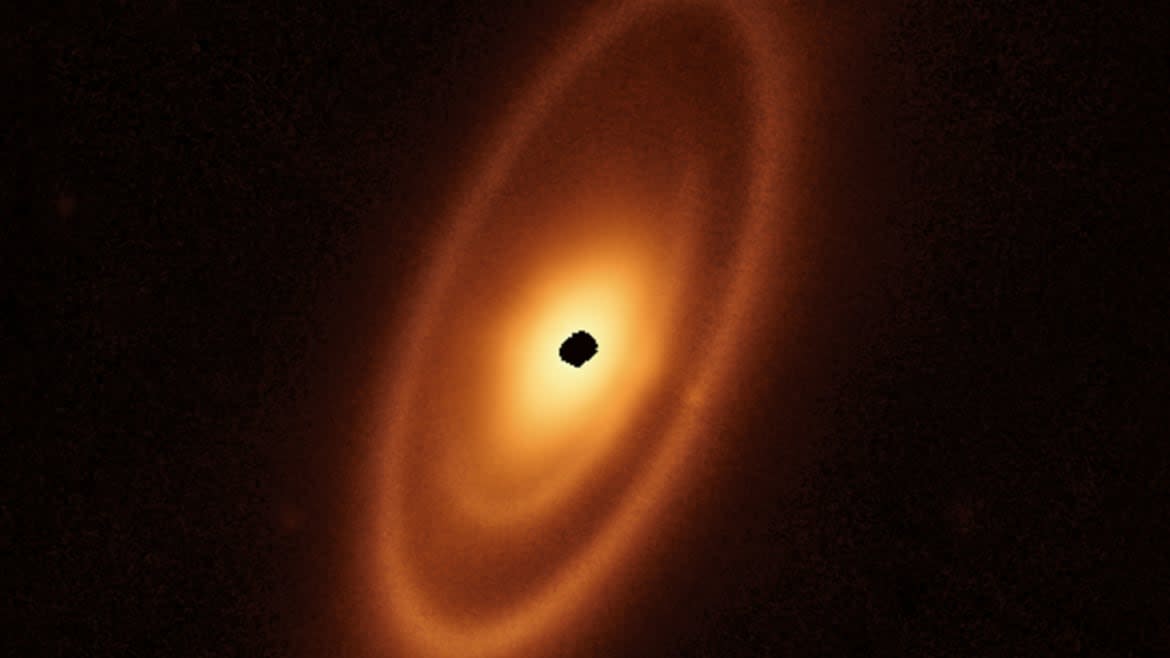NASA’s Webb Telescope Snaps Insane Photo of Dust Rings Around Nearby Star

You’d be mistaken to think an artist drew up the picture you see above. NASA’s James Webb Space Telescope snapped a photo of a young star called Fomalhaut—and it managed to spot the extraordinary backdrop of a set of glowing dust belts surrounding a nearby young star. The findings were published Monday in Nature Astronomy.
Fomalhaut is located 25 light years away from Earth, in the constellation Pisces Austin’s (the “Southern Fish”). It’s one of the brightest stars in the night sky, and so it comes as no surprise that the world’s most powerful space telescope ever to be launched has managed to glimpse it looking like an orange nova surrounded by rings upon rings.
The rings themselves are an especially compelling part of Fomalhaut. They are filled with gas, dust, and debris that will eventually—give or take a few billion years—coalesce into planets and moons and other small bodies. The largest of the rings extends 14 billion miles away from its host star (about 150 times the distance between Earth and the sun.)
Some experts believe there is probably a planet or two already in orbit around the Fomalhaut, obscured by the bright light emphasized by the dust in the region.
There is, of course, one especially notable part of the image that you’ve undoubtedly already spotted: the gaping black spot in the center. That’s not an object that photobombed the picture. It’s simply a part of the image where no data was collected.
The irregular black shape at the centre of the disk is where no data were collected.
The image was acquired by JWST's Mid-Infrared Instrument (MIRI).
Read more:https://t.co/lHZvUeU2g3
Credit: NASA/ESA/CSA/András Gáspár/Alyssa Pagan— Paul Byrne (@ThePlanetaryGuy) May 8, 2023
One of the reasons the new image is so exquisite has to do with where Webb’s strengths lie. The telescope is specialized in observing the universe in infrared—which means it can pierce through obscuring matter to get a cleaner photo of objects. In this case, it means the debris disks don’t simply make Fomalhaut’s system look like a thick cloud—its debris disks are given definition and structure, and we can see exactly what parts are starting to fuse into smaller units that will one day become planets.
Get the Daily Beast's biggest scoops and scandals delivered right to your inbox. Sign up now.
Stay informed and gain unlimited access to the Daily Beast's unmatched reporting. Subscribe now.

